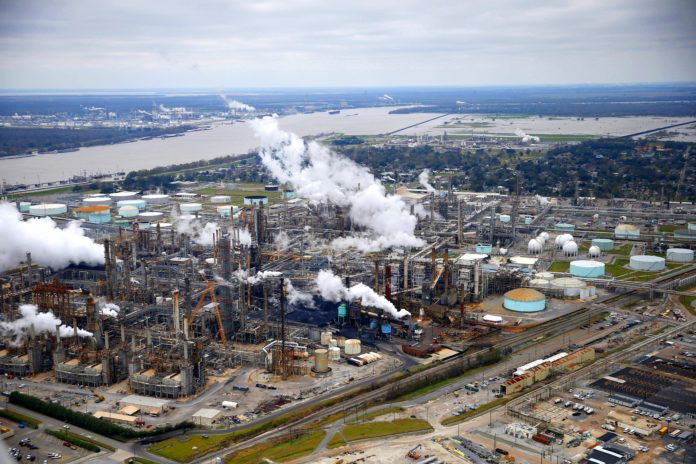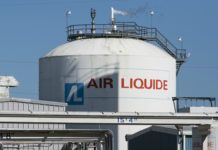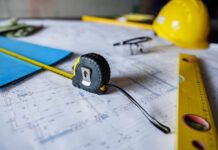
A trait born out of necessity, Louisiana residents are nothing if not resilient. Countless times, they’ve faced down storms, then tackled the arduous task of putting the pieces back together in the aftermath.
And perhaps no group is better than the state’s petrochemical industry in preparing for, responding to and rebounding from whatever comes its way. What has been lacking, perhaps, is a collaborative environment where academia and industry leaders work together to share and benefit from best practices.
LSU’s Center for Energy Studies, as part of a team led by Texas A&M University, has plans to change all that, as it could soon assist industry in identifying and rectifying vulnerabilities in its response to storms. A new Engineering Research Center for Resiliency Enhancement and Disaster-Impact Interception (READII) could potentially be up and running within two years should the team receive the necessary grant from the National Science Foundation.
The team cleared a critical hurdle this summer, when the NSF awarded it a smaller, $150,000 planning grant for the center. David Dismukes, CES executive director and a professor in the College of the Coast and Environment at LSU, is part of this multidisciplinary team that would provide expertise in system integration, disaster mitigation, economics, infrastructure, supply chain, system modeling and optimization.
“The resiliency of the manufacturing sector along the Gulf Coast is becoming more important as the industry expands with billions in new investments,” Dismukes says. “This NSF award represents an excellent opportunity for CES to leverage over a decade’s worth of research on the role of critical energy infrastructure in this manufacturing resiliency process.”
Other participants include the TEES Gas and Fuels Research Center at Texas A&M University, the University of Texas at Austin, Mississippi State University, Tuskegee University in Alabama and Florida Atlantic University.
COLLABORATING WITH INDUSTRY

The ERC READII would address a number of critical topics, including the impact of natural disasters on manufacturing facilities and their respective supply chains, the root causes of manufacturing vulnerabilities, estimating the dynamic relationships between manufacturing industries and their local communities, and identifying novel and proactive strategies and decision tools to facilitate manufacturing resiliency.
“The ultimate goal is to improve the resiliency of infrastructure and industry, and to provide information on how to improve that resiliency and share more information that essentially de-risks the industry to exposure from these kinds of events,” Dismukes says.
In the process, industry groups such as the Louisiana Chemical Association, Louisiana Mid-Continent Oil and Gas Association and the Louisiana Oil & Gas Association would likely be involved in a collaborative role. Chris John, president of LMOGA in Baton Rouge, says it’s nothing new for his group to partner with CES, adding he looks forward to the effort. The association has had a “strong and professional working relationship with CES” on other issues facing industry, such as coastal erosion, climate change and more, he notes.
“The oil and gas industry is very attuned to the need for resilience when it comes to natural disasters,” John says. “We have a lot at stake from a human and infrastructure perspective. There is a massive amount of infrastructure that needs to be protected, whether it’s pipelines, in-shore/offshore infrastructure, etc.”
Greg Bowser, LCA president, feels the endeavor could provide an excellent platform for sharing best practices, as some companies tend to work in silos. LCA has leaned upon the expertise of CES in the past on energy-related issues that impact industry. “A lot of these large multinational companies are all doing their own individual planning and studies as it applies to their facilities and what they make. This provides an opportunity to put all those ideas in one place and to share best practices.
“Improved resiliency is not only better for the plants and those companies that own them, but for the employees, the contractors and the people that depend upon the products that they make.”
FOCUS ON ENERGY
LSU’s CES was an obvious choice for the endeavor. It has been categorizing and identifying critical energy infrastructure since the late 1990s. “It actually started before Hurricane Katrina, when we began working on infrastructure projects on behalf of the Bureau of Ocean Energy Management,” Dismukes says. The prevalence of natural disasters in the mid-2000s underscored the importance of the effort.
“We were well-positioned into looking at these issues, particularly as it relates to energy,” Dismukes says. “We’ve been updating that work on a year-to-year basis.”
As the planning grant was just awarded, Dismukes doesn’t yet have a clear vision of next steps, but feels certain that LSU’s area of focus will be the energy sector. “And not just resiliency issues in terms of bouncing back from catastrophic events, but those ongoing challenges that occur day in and day out; i.e., changes in weather patterns, flooding and sea level rise due to climate change.”
He’s optimistic that the LSU-Texas A&M team will receive the grant to create and operate the ERC READII, with an announcement perhaps by late 2019. With Texas A&M as the leader, LSU’s primary concentration would likely be in energy manufacturing and energy processing, with the goal of setting up direct interactions with industry, performing modeling and developing a feedback loop for best practices, simulations and so on.
THE GOAL OF RESILIENCY
There’s no “one size fits all” for a resilient critical infrastructure. It varies by infrastructure type and by event, and can range from hardening activities to general response to prepositioning and staging equipment prior to an event.
Nonetheless, the ERC READII Center would go beyond examining the direct impacts to offshore and onshore operations to exploring the wide-ranging and potentially cascading effects that can occur. Additionally, it would consider the relationship between various industries and the communities they inhabit.
The center would perform a wide range of functions, including examining infrastructure, exposure and risk to catastrophic events. Fortunately, LSU has been compiling such data for decades. “That’s why we are well-positioned, and why they came to us,” Dismukes says. “We’ve become the ‘go-to place,’ particularly with the offshore regulators, in terms of understanding the implications of how infrastructure is impacted by these catastrophic events.”
Since 2010, CES has been working under a separate $1.2 million NSF grant to examine issues relative to sea level rise and how it impacts communities along the Gulf Coast. The ERC READII Center will assimilate LSU’s existing data into the process, “disseminating the information to industry and government and understanding the depth and the breadth of those issues.” The work produced by the ERC READII would extend to the entire value chain—refineries, pipelines, power and electricity, gas processing and fractionation, among others.
Following a year of meeting and planning, Dismukes expects the team to develop a full proposal. The strength of the proposal, as well as the degree of industry participation, will determine whether it goes to the next level. If all goes as planned, the center could be operational in 2020.
The location of the facility—whether housed at Texas A&M or LSU—is still up in the air, but Dismukes expects that certain components would be located at LSU.






